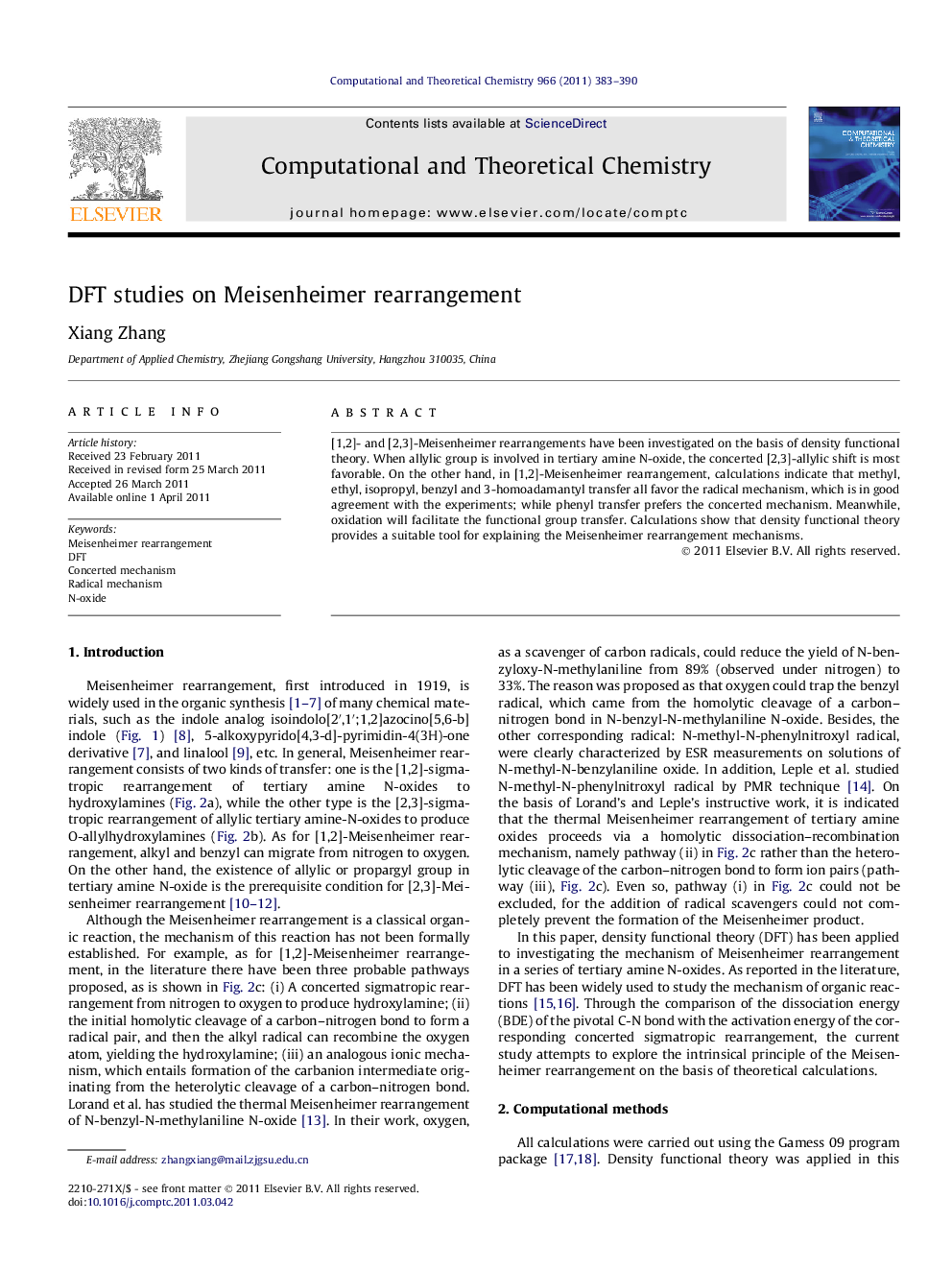| Article ID | Journal | Published Year | Pages | File Type |
|---|---|---|---|---|
| 5395272 | Computational and Theoretical Chemistry | 2011 | 8 Pages |
Abstract
[1,2]- and [2,3]-Meisenheimer rearrangements have been investigated on the basis of density functional theory. When allylic group is involved in tertiary amine N-oxide, the concerted [2,3]-allylic shift is most favorable. On the other hand, in [1,2]-Meisenheimer rearrangement, calculations indicate that methyl, ethyl, isopropyl, benzyl and 3-homoadamantyl transfer all favor the radical mechanism, which is in good agreement with the experiments; while phenyl transfer prefers the concerted mechanism. Meanwhile, oxidation will facilitate the functional group transfer. Calculations show that density functional theory provides a suitable tool for explaining the Meisenheimer rearrangement mechanisms.
Related Topics
Physical Sciences and Engineering
Chemistry
Physical and Theoretical Chemistry
Authors
Xiang Zhang,
